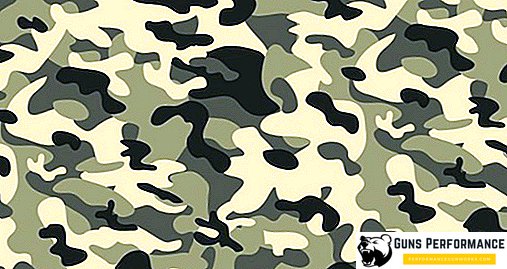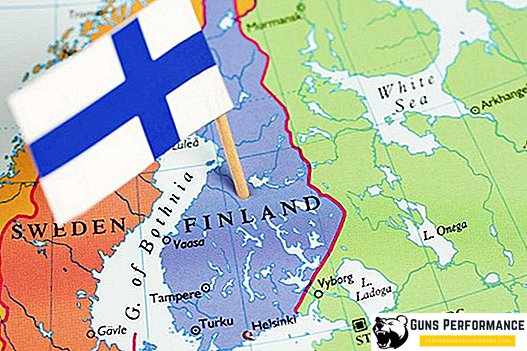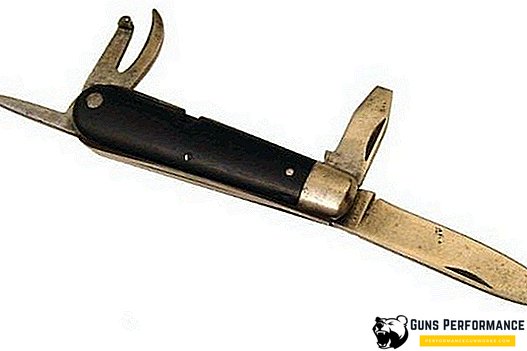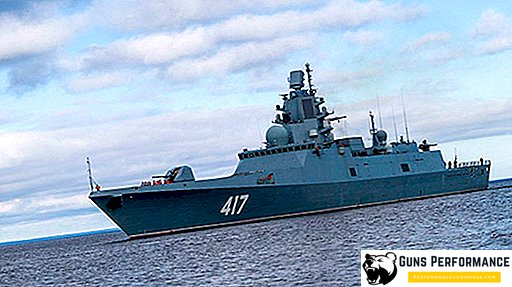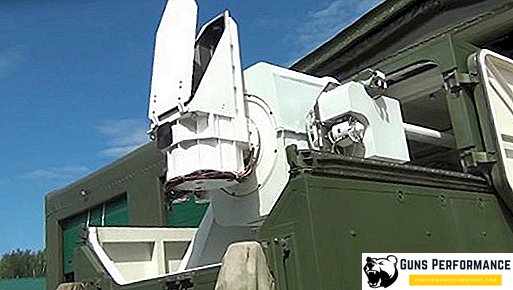Despite the rapid development of scientific and technological progress, torpedoes, like a hundred years ago, remain one of the main types of weapons of the Navy. Moreover, torpedo weapons are the main means of defense and attack by submarines; they also remain the main instrument for fighting the underwater threat.
The first samples of torpedoes appeared in the second half of the XIX century, precisely because of these weapons, the First World War became the "high point" for submarines.
Torpedoes continuously improved, became faster, smarter and more deadly. But fundamentally, little has changed in their design: most torpedoes are self-propelled cylindrical submersibles, which are driven by propellers.
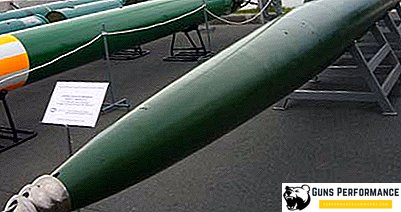
For several decades torpedoes were practically the only weapon of submarines, the situation changed only in the second half of the 20th century, when submarines turned into floating launch sites for ballistic and cruise missiles.
This article will discuss a very unusual rocket-torpedo "Shkval", which is in service with the Russian Navy.
A bit of history
According to Russian historiography, the project of the first torpedo was developed by the Russian designer Aleksandrovsky in 1865. However, it was recognized as premature and was not embodied in Russia.
The first operating torpedo was created by the Englishman Robert Whitehead in 1866, and in 1877 this weapon was first used in combat conditions. In the following decades, torpedo weapons actively developed, even a special class of ships appeared - destroyers, whose main armament became torpedoes.
Torpedoes were actively used during the Russian-Japanese war of 1905, most of the Russian ships in the Tsushima battle were sunk by Japanese destroyers.
The first torpedoes worked on compressed air or had a combined-cycle power plant, which made their use less effective. Such a torpedo left behind a clearly visible trace of gas bubbles, which gave the attacked ship the opportunity to dodge it.
After World War I, the development of a torpedo with an electric motor began, but it turned out to be very difficult to make. They could bring this idea to life only in Germany before the start of the next world war.

Modern torpedoes pose a serious threat to any surface ship and submarine. They reach speeds of 60-70 knots, can hit targets at a distance of more than one hundred kilometers, are guided by sonar or using the physical characteristics of the vessel. Also widespread are torpedoes, which are guided over a special optical fiber from a surface vessel or submarine.
During the Cold War, the US Navy and its allies, thanks to the air defense system and carrier-based aviation, had an excellent air defense system, and it was very difficult to hit them from the air. Therefore, in the USSR, a huge amount of resources was thrown on the construction of submarines and the development of torpedo weapons.
It should be noted that torpedoes are much more dangerous for a surface ship than anti-ship missiles. Firstly, the torpedo warhead is much larger than any anti-ship missile, and secondly, all the energy of a torpedo blast is aimed at destroying the ship’s hull, since water is an incompressible medium. If, after being hit by the RCC, sailors usually engage in extinguishing fires and fighting for the survivability of a ship, then after a torpedo attack they are busy searching for life jackets and rafts.
In addition, the torpedoes do not depend on weather conditions, they are not afraid of the gale and strong waves. They are much less noticeable than rockets, a torpedo is harder to destroy, and you will not interfere with it. The ships of the class "corvette" or "destroyer" ordinary torpedo can simply break into several parts.
Another noteworthy fact is that launching the anti-ship missile ship from the submarine is a mortal danger for it. With high probability after this, the submarine will be detected by enemy aircraft and destroyed.

In the 60s of the last century in the USSR, the development of an unusual torpedo "Squall" began, which was radically different from any analogues. The development of this project was engaged in the Research Institute №24 (SNNP "Region"). A year later, tests began on the Issyk-Kul lake, and the product had been completed for more than ten years.
In 1977, a rocket-torpedo was adopted, first it had a nuclear warhead with a capacity of 150 kt, then the torpedo received a warhead with a conventional explosive. It is still in service with the Russian Navy.
In Russia, the export version was produced - "Squall-E". Its cost is 6 million dollars.
There is information about the creation of a new, improved modification of a reactive torpedo, which has a longer range and a more powerful warhead. It should be noted that information about the "Squale" is quite small, many of the information is still secret.
Still need to say that the views on this torpedo (or rather, on the effectiveness of its application) are very different. The press usually speaks of "Squale" as a super-weapon, but many experts do not support this point of view, considering the "Squall" useless in real combat conditions.
For the first time, the public learned about the existence in Russia of a unique high-speed torpedo after a spy scandal associated with US citizen Edmund Pope, who allegedly wanted to withdraw the drawings of this weapon from Russia.
The main unique difference between the Squall and other torpedoes is its unbelievable speed: it is able to develop more than 200 knots under water. To achieve such indicators in the aquatic environment, which has a high density is very difficult.
The highlight of the "Squall" is its engine: if a conventional torpedo moves forward due to the rotation of the screws, then the "Squall" uses a jet engine as the power plant. However, for the development of such an incredible speed under water is not enough and a jet propulsion. To achieve such speed indicators, the Squall uses the effect of supercavitation; an air bubble appears around the torpedo while moving around, which significantly reduces the resistance of the external environment.

Description of the device and engine
"Flurry" has a jet engine, it consists of a starting accelerator, which accelerates the torpedo, and a propulsion engine, which delivers it to the target.
The torpedo propulsion engine is hydrojet, straight-through, it uses metals that react with water (magnesium, lithium, aluminum) for its work, and outboard water as an oxidizer.
When the torpedo reaches a speed of 80 m / s, an air cavitation bubble begins to form near its nose, which significantly reduces the hydrodynamic resistance. But one speed is not enough: on the Squall nose there is a special device - a cavitator, through which additional pressurization of gases from a special gas generator takes place. This is how the cavitation cavity is formed, which envelops the body of the torpedo entirely.
"Flurry" does not have a homing head (GOS), the coordinates of the target are entered just before launch. Turns of a torpedo are carried out due to the rudders and deviations of the head of the cavitator.

Advantages and disadvantages
Without a doubt, the Shkval rocket-torpedo is a unique technical product, the creation of which was carried out by specialists in various fields of knowledge. To create it, it was necessary to create new materials, to design an engine working on other principles, to study the phenomenon of cavitation as applied to jet propulsion. But is a weapon with so many revolutionary characteristics effective?
The main advantage of the "Squall" is its amazing speed, but it is also the main reason for its shortcomings.
These include the following:
- high noise level;
- cavitation bubble makes it impossible to control the torpedo and its homing;
- short range torpedoes: on old versions to 7 km, on new ones it was increased to 13 km;
- insufficient maximum depth of the torpedo (no more than 30 m), this makes it ineffective for the destruction of submarines;
- low accuracy.
As can be seen from the above, “Flurry” has a large number of limitations that make its effective use difficult. To approach the enemy at 7-13 km for a submarine is extremely difficult. Launching a torpedo that makes "hellish" noise will almost guarantee the location of the submarine and put it on the brink of destruction.
At present, the torpedo weapons of the leading maritime powers are developing in a somewhat different way. Developed torpedoes with remote control (by cable) with increasing range and accuracy. In addition, the designers are working to reduce the noise of torpedo weapons.
This concept can be compared with the use of a sniper rifle on the battlefield, when one accurate shot from a long distance is everything.
Foreign analogues
At the mention of the torpedo "Squall" it is always emphasized that only Russia has such weapons. For a long time, it was so. But in 2005, representatives of the German company Diehl BGT Defense announced the creation of a new supercavitational torpedo "Barracuda".
According to the developers, its speed is so high that it overtakes its own sound waves propagating in the water. Therefore, it is very difficult to detect it. In addition, the "Barracuda" is equipped with the latest homing system, and the movement of torpedoes can be controlled (unlike the Russian torpedoes). Information about this torpedo in open sources is not enough.


